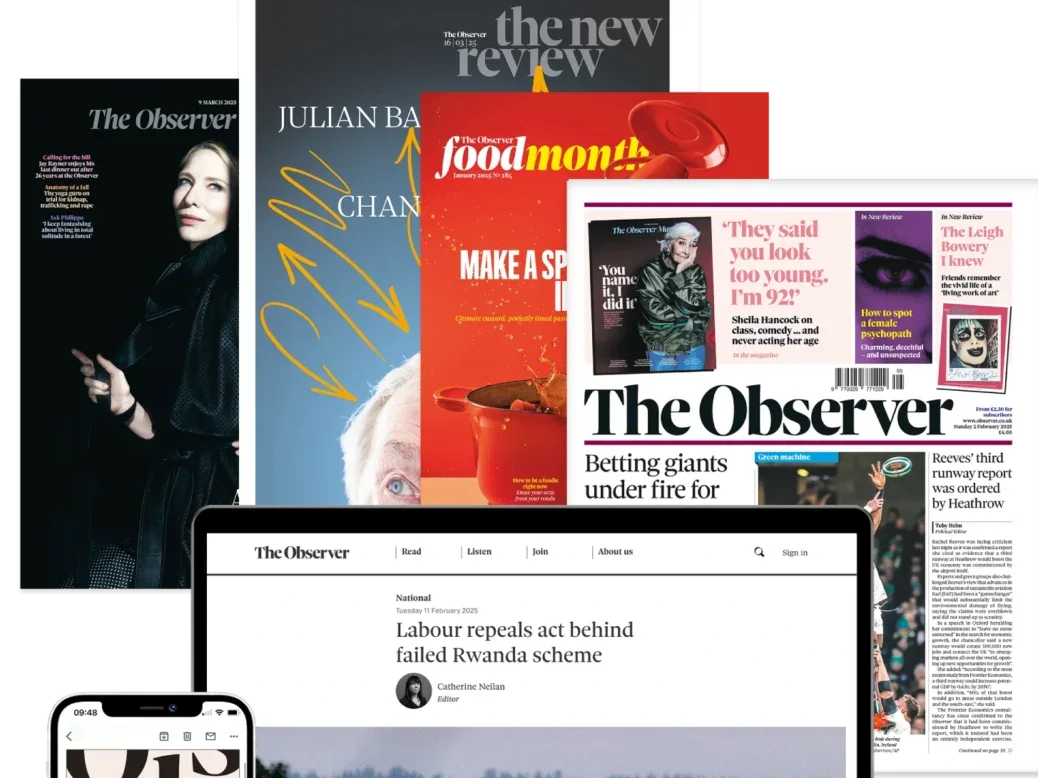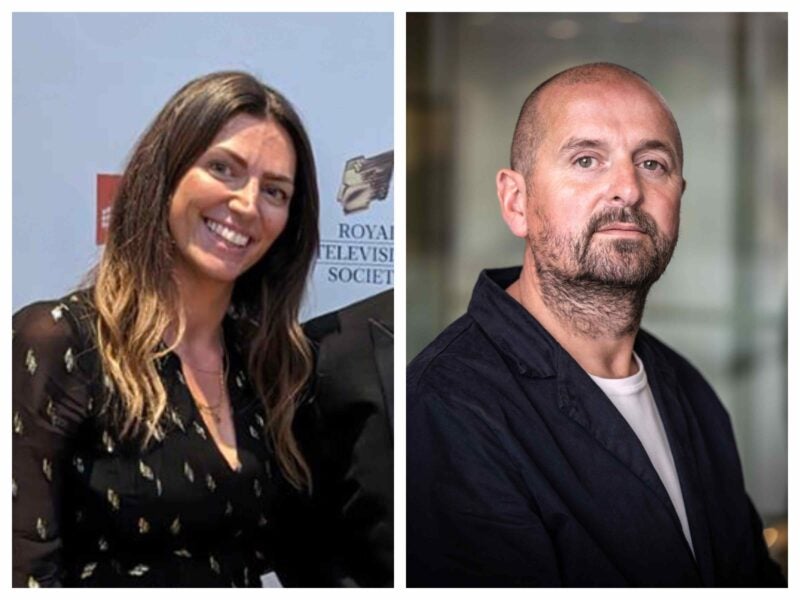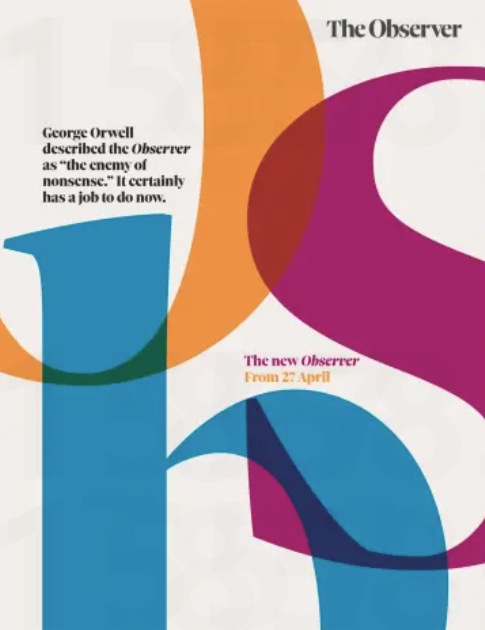
The Observer’s first dedicated website will be “a place where people come to understand what’s going on in the headlines” but won’t attempt to rival the BBC or even its old stablemate The Guardian.
Observer.co.uk, which launches tomorrow (Friday), will publish about eight to 12 stories a day “that we put a lot of love and time into”, digital editor Basia Cummings told Press Gazette this week a day after legal ownership transferred from Guardian Media Group to Tortoise Media.
Breaking news and daily updates will not be a priority for the site but it will still be fighting to break scoops and publish agenda-setting investigations. Cummings said The Observer’s editorial focus is not changing: “If anything, we would just say we’re adding to it in terms of podcasts and newsletters.
“But news, culture and style are the main pillars of our newsroom,” she added, citing the brand’s traditional “investigative, internationalist” news coverage and other pillars through the Observer New Review, the Observer Magazine and Observer Food Monthly.
“We’re comfortable with the idea that we’ll be a second read for people, that they’ll go and read the headlines on the FT or the BBC, but they’ll come to us for the reads to make sense of it all,” Cummings added.
It also fits with the tradition of Tortoise, which ex-Times editor and BBC director of news James Harding, now Observer editor-in-chief founded in 2018 with the campaign message: “We don’t do breaking news, but what’s driving the news. Not the news as it happens, but when it’s ready.”
The digital Observer will have a daily email newsletter and will create a slate of podcasts later in the year. Events and festivals, the type of model used by Tortoise previously, are also on the cards.
The website launching on Friday is only the first iteration: a new version is being built, along with an app. A dynamic paywall will be added when these are ready to go in several months, but for now content will be free with a first-party data strategy. Press Gazette reported during the sale process that the aim would be to reach 100,000 digital subscribers – a milestone recently reached by Mail Online with its partial paywall in less than ten months.
Co-CEO ‘really ambitious’ about The Observer in print
The digital launch comes alongside the continuation of the weekly print edition of The Observer, with the first edition under Tortoise ownership coming out on Sunday. The Observer does not publish a print ABC figure, but it is believed to sell in the region of 100,000 copies per week.
Asked about the prospects for the physical paper in a market of continual print circulation decline, co-chief executive Richard Furness told Press Gazette: “I’m really, really ambitious about The Observer and its prospects in print and digital. I wouldn’t put a number on it, but I’m feeling really ambitious about it.”
He continued: “I absolutely wouldn’t settle for the status quo. I think we can buck the market trend, and I think we can really, really shift perception of it, both with readers and with advertisers. So both are commercial lines I feel ambitious about.”
Furness, who spent 27 years at The Guardian latterly as chief strategy officer helping to lead the takeover deal, moved over to Tortoise Media on 10 March. He is working with co-CEO Emma Sullivan, who worked on the sale as Tortoise managing director. Former Observer deputy editor and acting editor Lucy Rock has moved to Tortoise as print editor.

Furness said work has been ongoing since January on “what print edition we want to put out into the market, not just from an editorial perspective, but also how do we want it to feel?”
He added: “I think people will really notice a different sort of quality to The Observer on that Sunday.”
For example, the newspaper will be printed on a higher grade of paper which Furness said will be positive for both readers and advertisers.
He also suggested there will be more pages in the print product: “We are certainly looking at the magazine and OFM and investing in the journalism in both those magazines, so there’ll be both better quality, but also more journalism for people in those pages, which I have to say is a is a great conversation for a newspaper to be having in 2025 – how do you provide more for readers and for advertisers, and better quality…
“It feels like quite a unique conversation that we’re having in this building at the moment.”

Creative director Jon Hill similarly described it as “quite unique at the moment. Most of the stories are not good news stories. I definitely see this as a good news story.”
Hill, who has been at Tortoise since its 2018 launch as a slow news start-up and has previously held the same role at The Telegraph and The Times, told Press Gazette the new Observer has not undergone a full redesign but that “everyone will notice some changes”.
He teased that there are six “interventions that we’ve made that should signal to the readers that this thing is different from the week before”. A “fuller reimagining” will follow, similar to the digital relaunch to come, later this summer.
The Tortoise brand is largely amalgamating into The Observer, although its most successful strand – the Tortoise Investigates podcast strand, which has a younger, more female-skewed audience than the average – will continue.
Tortoise’s Daily Sensemaker email and The News Meeting and Slow Newscast podcasts will be rebranded under the banner of The Observer.
Furness said: “We will all work for The Observer. So The Observer will be the brand. I don’t think anyone here would have gone through the last year and then not done that. That feels like a very smart, sensible thing for The Observer to be the main brand.” Tortoise has so far been loss making, standing at more than £20.3m between 2019 and 2023.
Some of the names added to the newsroom so far include former Times journalist Rachel Sylvester as political editor, ex-Times crime correspondent John Simpson as home affairs editor, recent New Statesman acting editor Tom Gatti as literary editor and former New York Times chief soccer correspondent Roy Smith as football correspondent.
The first priority among senior leadership has been ensuring a smooth transition for the new team, made up of a mix of new hires as part of £25m in investment over the next five years, former Tortoise journalists and the Observer journalists who chose to move across.
Observer staff had been given the choice as to whether to move over to Tortoise or take a voluntary redundancy package. Press Gazette understands around half of Observer staff decided to move to the new owner and the strength of feeling from some against the deal was demonstrated by two 48-hour Guardian and Observer staff walkouts in December.
‘Palpable excitement’ among remaining Observer staff
Furness said it was a “very generous” package, adding: “It’s right, I think, not to force people to come if they don’t want to and everyone had a choice to make.
“I think were lots of factors that can dictate that choice, from someone’s age to other things happening in their life to maybe being just opposed to what we’re doing, and The Observer leaving The Guardian. Everyone had different choices to make and, obviously, anyone who’s not coming across we wish all the best to and they’ve all played a huge part in making The Observer what it is today.
“What we know and what we can see is that the people who have chosen to come over here – here in the building, there is a palpable level of excitement. They are all bringing new ideas and fresh thinking. They are wonderfully all working with the Tortoise crew. We didn’t have to do as much as we thought we might have to do in terms of bringing those teams together.”
Furness pledged that the takeover “isn’t just sort of producing The Observer from a different building, which I think it maybe was seen by some last year. It’s about combining two really brilliant newsrooms together…”
As well as the editorial hires, with more roles still to fill, Furness noted that The Observer is getting its own dedicated commercial team for the first time in many years.
He said it will make a huge difference to have ” people who are out there actively selling The Observer to agencies and clients every day… People thinking about The Observer’s marketing, people thinking about its print sales, absolutely dedicated to The Observer.”
Furness added that this “adds to this sense of just creating something quite special. You don’t see a lot of these types of hires happening in Fleet Street.”
Furness, Cummings and Hill all separately expressed a sense of blending the nimble start-up culture of Tortoise with a reverence for the world’s oldest Sunday newspaper. As Cummings put it: “I think there could be some real magic in that, and I think that’s what we’re all quite excited about.
“We’re not naive to think that there’s not going to be some bumps and some learning along the way, but I think there’s an amazing spirit of rolling up our sleeves and getting it done and getting it out there.”
Email pged@pressgazette.co.uk to point out mistakes, provide story tips or send in a letter for publication on our "Letters Page" blog

